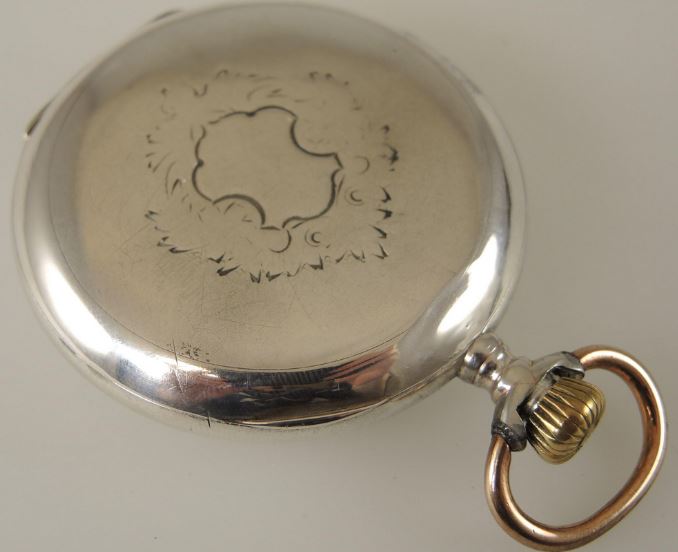Last updated on May 11, 2024
I recently managed to purchase a Longines antique pocket watch, which was on my wish list. As such, I am now looking for the next item on the list. Alongside, Longines, I think the next two most high-profile watch manufacturers on my wish list are Rolex and Omega. At this point in time, I think Rolex may be a little out of my price range, so I thought I would start looking at Omega. I will still keep a lookout for other interesting antique watches, but at the moment my searches are focussing on Omega. At the moment, I am only looking at recognised antique watch dealers and haven’t yet had the courage to purchase from online auctions. In this post, we will take a look at an antique silver Omega pocket watch, c1900.
I found this interesting Omega at Atlam Watches. Unfortunately, it had already sold, but it met all of the criteria from my wish list. It is branded Omega both on the dial and the movement. It is in a very presentable condition, which is a must for me as I intend to wear the watch on suitable occasions. There is no mention of the timekeeping accuracy, but I am sure that a phone call to Atlam could answer that question. I require my antique watches to be accurate to within 2 minutes a day. Outside of this, they are just not reliable enough for daily use.

Omega movement
The watch has a ¾ plate movement with a lever escapement, 15 jewels and a compensated balance. The gilt movement is signed “Omega” and is in superb condition. Gilt movements are characterised by a gold-coloured finish “gilded” on brass movement plates, normally engraved without the colour inlay. This type of finish was very common before 1900. However, once manufacturers began offering nickel-finished movements, gilt became a less popular option. Nickel finishing was more durable and offered a better surface for decorative machining methods.

The movement is housed in a silver open face case, which has a hinged inner dust cover and an outer case back. The inner cover is signed ‘Omega, Grand Prix, Paris 1900’ and is decorated with a row of medals with miniature detailing. The medals are finished in gold. Omega was awarded the Grand Prix at the Universal Exposition, Paris in 1900. This was in recognition for the technological advancements achieved by the entire Omega collection.

Case and dial
The case has a large crest on the back and with some engine turned decoration. There are signs of wear and tear on the case back. There are some minor marks and damage to the decorative crest. However, this is not unexpected in an antique watch and I think it adds to the charm and character. Even at 85% mint condition, this still remains a very presentable watch. The bow has lost its original gilding, as has the bezel and case back. The watch measures 51mm wide and 14mm deep, excluding the stem and crown.

The crisp white enamel dial has a set of gilt filigree hands. The dial is signed “Omega” and is in near perfect condition. Apparently, there are some faint hairline cracks under the enamel, but this is not visible to the naked eye. The watch has a bevelled mineral crystal and is stem-wound, stem-set.
The watch comes with a vintage Omega box. However, there is no guarantee that this is the original box. The type of watch displayed on the front of the box is certainly different from the watch itself. Original or not it is still nice to have a vintage box to match your watch.
This is an antique pocket watch that satisfied all of my wish list criteria. It’s a shame that I missed out. Fortunately, some other lucky collector is enjoying this timepiece now. As a result, I will just have to continue my search for my own antique silver Omega pocket watch.
Atlam code: 4.149
